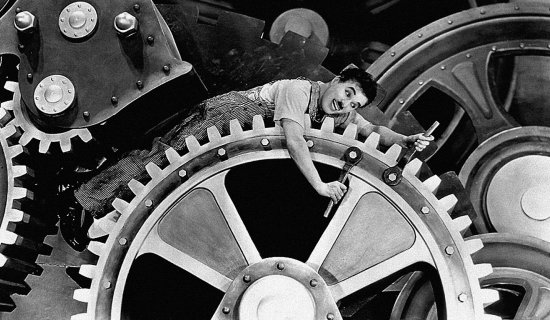It could be challenging for a small-town editor in the 1920s to fill his weekly paper with interesting news. On a slow day, an odd potato could warrant four paragraphs:
 |
| Pilot Mound Sentinel Editor Ron Tuckwell loved to tease his friend Pete Fraser. |
Even a hole in a sidewalk could earn a mention:
But sometimes the lead story was dramatic and riveting. Accidents especially were front-page news. Horses kicked or tossed their riders. Horseless carriages created new perils. Household mishaps and farm accidents broke bones.
And sometimes it was man versus machine.
 |
| The Sentinel’s front-page news from October 29, 1925 would have been the talk of the town. |
Luckily, Dr. Ferguson could attend promptly. His phone number was 1. Just 1. He operated his medical practice out of “The Maples,” his large house at Broadway and Fraser Street, not far from McKay’s Garage on Railway Street.
 |
| McKay’s Garage, c. 1954. The building was built by W. O. Mayne in 1913. [Source: Pilot Mound 50 / District 75 / Reunion booklet, July 1954, p. 50] |
Alfred E. Moore escaped permanent injury and made a remarkable recovery. A few weeks after his horrific accident he was re-elected as Mayor for a third term, by acclamation, a post he held until 1937.
Pilot Mound was fortunate to have the services of doctors like Dr. Ferguson. In 1905 he welcomed 26-year-old Dr. Thomas Andrew Cohoe (1879-1939) to his practice. Both were committed to their profession, and worked together for a number of years. A history of the area published in 1969 tells of Dr. Cohoe’s similar devotion:
 |
| Dr. Robert Dickson Ferguson (1866-1942) [Source: Pilot Mound Illustrated. 1902-1903, p. 13] |
 |
| “The Maples,” Broadway and Fraser Street [Source: Pilot Mound Illustrated. 1902-1903, p. 13] |
Pilot Mound was fortunate to have the services of doctors like Dr. Ferguson. In 1905 he welcomed 26-year-old Dr. Thomas Andrew Cohoe (1879-1939) to his practice. Both were committed to their profession, and worked together for a number of years. A history of the area published in 1969 tells of Dr. Cohoe’s similar devotion:
Mr. [William] Aitken, a recent arrival from Scotland was working on a farm in the Pilot Mound district in 1905. A big Sawyer-Massey steam tractor had been damaged and Mr. Aitken and his employer were hauling it back to the farm-yard for repair. In handling one of the teams his leg became tangled in the driving lines and he was tripped, falling in the path of the big tractor. “The next moment I was on the ground pinned under the heavy drive wheels which had rolled across my chest. Surprisingly enough I felt very little pain while under the wheels, though the blood poured out of my ears, nose and mouth. But as soon as the big tractor was pulled off me the agony was terrible. My ribs were crushed in, both front and back, my collar bone was broken, plus various other injuries. Things were so bad that I asked a young Englishman, who had been taking pot shots at crows with a revolver that morning, to shoot me and put me out of my pain.”
Instead, a doctor was sent for from Pilot Mound. Doctor Cohoe was recently out of medical school and for devotion to duty he would be hard to beat. For four days and three nights he stayed with the injured man. He sent to town for rolls of cheese cloth and plaster of Paris, and without X-rays or any equipment other than what the farm had he brought the patient back to health.
“In two short weeks he had me walking. Six weeks after the accident my brother took sick in the night and though still in a cast I set out on horseback to get a doctor. Part way to town we came to a gate. Knowing I would never mount again, if indeed I ever got off the horse, I had my mount jump the gate, which, luckily for me he did successfully.
“How I survived seems a miracle to me. The will to live was strong in me, but without doubt my recovery is also a testimony to the skill and faithfulness of the young pioneer Manitoba doctor, Doctor Cohoe.”
[Source: Elsie Moir, ed., Chronicles of Our Heritage, Dec. 1969, pp. 180-181]
Pete Fraser would agree: you do not want to tangle with a steam engine.
 |
| A Sawyer-Massey steam engine powering the shingle mill at Austin’s Threshermen’s Reunion |
Yes, when it’s Man versus Machine, it’s an unfair fight, but with prompt medical attention, Alfred Moore and William Aitken beat the odds and resumed their lives.
But I suspect both men cringed watching Chaplin’s Modern Times movie of 1936:








